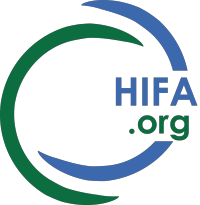Nearly one in 5 of the world's population lives in China, so the availability and use of reliable healthcare information in that country is especially important. This paper finds that 'Clinical Guideline development and adaptation methodologies, including for updating, as used in China tend to be variable and informal, and so need to be standardized. CG development in general is poorly managed and monitored. Greater effort and more funds need to be invested in improving the quality of Chinese CGs so as to ensure better healthcare.' Comment from me below.
CITATION: Health Res Policy Syst. 2021 Dec 23;19(1):151. doi: 10.1186/s12961-021-00799-7.
The development of clinical guidelines in China: insights from a national survey.
Song Y(1)(2), Li J(3), Chen Y(4)(5), Guo R(6), Alonso-Coello P(7)(8), Zhang Y(9).
ABSTRACT
BACKGROUND: Previous research suggests that the quality of clinical guidelines (CGs) in China is suboptimal. However, little is known about the methodology that CGs follow. We conducted a national survey of methods used by Chinese CG developers for CG development, adaptation, and updating.
METHODS: We used a previously piloted questionnaire based on methodologies of CG development, adaptation, and updating, which was distributed during September-November 2020 to 114 organizations identified from published Chinese CGs (searched 2017-2020), recommended by Chinese CG developers, and recommended by clinical discipline experts.
RESULTS: We collected 48 completed questionnaires (42.1% response). Most organizations developed CGs based on scientific evidence (89.6%), existing CGs (75%), or expert experience and opinion (64.6%). Only a few organizations had a specific CG development division (6.3%), a CG monitoring plan (on clinicians 33.3%; on patients 18.8%), funding (33.3%), or a conflict-of-interest (COI) management policy (23.4%). Thirty (62.5%) organizations reported using a CG development methodology handbook, from international organizations (14/30, 46.7%), methodology or evaluation resources (3/30, 10.0%), expert experience and opinion (3/30, 10.0%), or in-house handbooks (3/30, 10.0%). One organization followed a published adaptation methodology. Thirty-eight organizations (88.4%) reported de novo CG development: 21 (55.3%) formed a CG working group, and 29 (76.3%) evaluated the quality of evidence (21 [72.4%] using a methodological tool). Nineteen organizations (52.8%) reported CG adaptation: three (31.6%) had an adaptation working group, and 12 (63.2%) evaluated the quality of source CGs (2 (16.7%) using the AGREE II instrument). Thirty-three organizations (68.8%) updated their CGs, seven (17.5%) using a formal updating process.
CONCLUSIONS: Our study describes how CGs are developed in a middle-income country like China. To ensure better healthcare, there is still an important need for improvement in the development, adaptation, and updating of CG in China.
COMMENT (NPW): This paper is interesting, but it would be more valuable to compare the methodology and quality of clinical guidelines in China with other countries. Is anyone aware of a comparative analysis?
Best wishes, Neil
Neil Pakenham-Walsh, HIFA Coordinator, neil@hifa.org www.hifa.org

